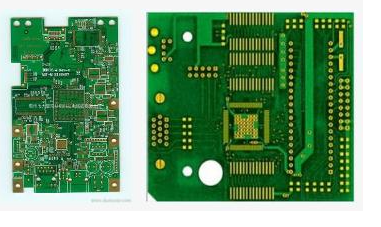Manufacturers that do PCBA labor and materials have a very complete production line, and all kinds of machines are professional and complete. Let me introduce you to the skills of using scrapers in the PCBA processing and production process.
1. The included angle of the scraper
In the PCBA processing and production process, the angle of the squeegee affects the vertical force of the squeegee on the solder paste. The smaller the angle, the greater the vertical component force. By changing the angle of the squeegee, the pressure generated can be changed. If the angle of the squeegee is greater than At 80°, the solder paste can only move forward without rolling as it is. At this time, there is almost no vertical force, and the solder paste will not be pressed into the opening of the stencil window. The best setting of the squeegee angle should be 45°~60°, at this time the solder paste has good rolling properties.

2. The speed of the scraper
The speed of the squeegee is fast, and the force of the solder paste becomes larger. Taking into account the actual situation of the solder paste pressing into the window, that is, the time for pressing the solder paste into the window becomes shorter. If the squeegee speed is too fast, the solder paste cannot roll and only slide on the printing template. Because it takes time for the solder paste to flow into the window, this can be clearly felt when printing fine-pitch QFP graphics. When the squeegee runs along one side of the QF, the solder paste pattern on the pad perpendicular to the squeegee is fuller than the other side, so there is The printing machine has the function of rotating the squeegee at 45° to ensure the uniformity of the solder paste on all sides during the fine-pitch QFP element printing. The maximum printing speed should ensure that the FQFP pad solder paste is printed uniformly and fully in the vertical and horizontal directions, usually when the squeegee speed is controlled at 20~ At 40mm/s, the board brushing effect is better at this time.
3. The pressure of the scraper
When the solder paste rolls, it will exert a positive pressure on the vertical balance of the squeegee device, which is commonly referred to as printing pressure. If the printing pressure is insufficient, the solder paste will not be scratched cleanly. If the printing pressure is too large, it will cause leakage behind the template and scratches on the surface of the steel plate. Therefore, the pressure of the squeegee is generally set at 5~12N/(25mm). The ideal squeegee pressure should be based on just scraping the solder paste from the surface of the steel plate.
4. Scraper width
If the squeegee is too wide relative to the PCB, then more pressure and more solder paste will be required to participate in its work, which will result in a waste of solder paste. Generally, the width of the squeegee is the PCB length(printing direction) plus about 50mm, and it is necessary to ensure that the squeegee head falls on the metal template.
5. Printing gap
Usually keep the PCB and template zero distance (in the early days it was also required to control 0~0.5mm, but it should be zero distance when FQFP is available). Some printing machines also require the PCB plane to be slightly higher than that of the template. After adjustment, the metal template of the template is slightly covered. Support upwards, but the height of this support should not be too large, otherwise it will cause damage to the template. From the perspective of the operation of the scraper, the scraper runs freely on the template, which requires that the solder paste be scraped away wherever the scraper goes. Excess solder paste, but also requires the scraper not to leave scratches on the template.
6. Separation speed
After solder paste printing, the instantaneous speed of the steel plate leaving the PCB is a parameter related to the printing quality, and its adjustment ability is also a parameter that reflects the quality of the printing machine, which is especially important in precision printing. Early printing presses were separated at a constant speed. Advanced printing presses had a tiny staying process when the steel plate left the solder paste pattern to ensure the best printing pattern.
7. Shape of the squeegee and materials
The material and shape of the squeegee head have always been a hot topic in printing solder paste. There are many shapes and materials for the squeegee, which can be divided into two types: polyurethane hard rubber and metal squeegee. At present, with the widespread use of stainless steel plates, metal scrapers are used for printing machine scrapers, which are made of high-hardness alloys and have high fatigue resistance, wear resistance, and bending resistance.